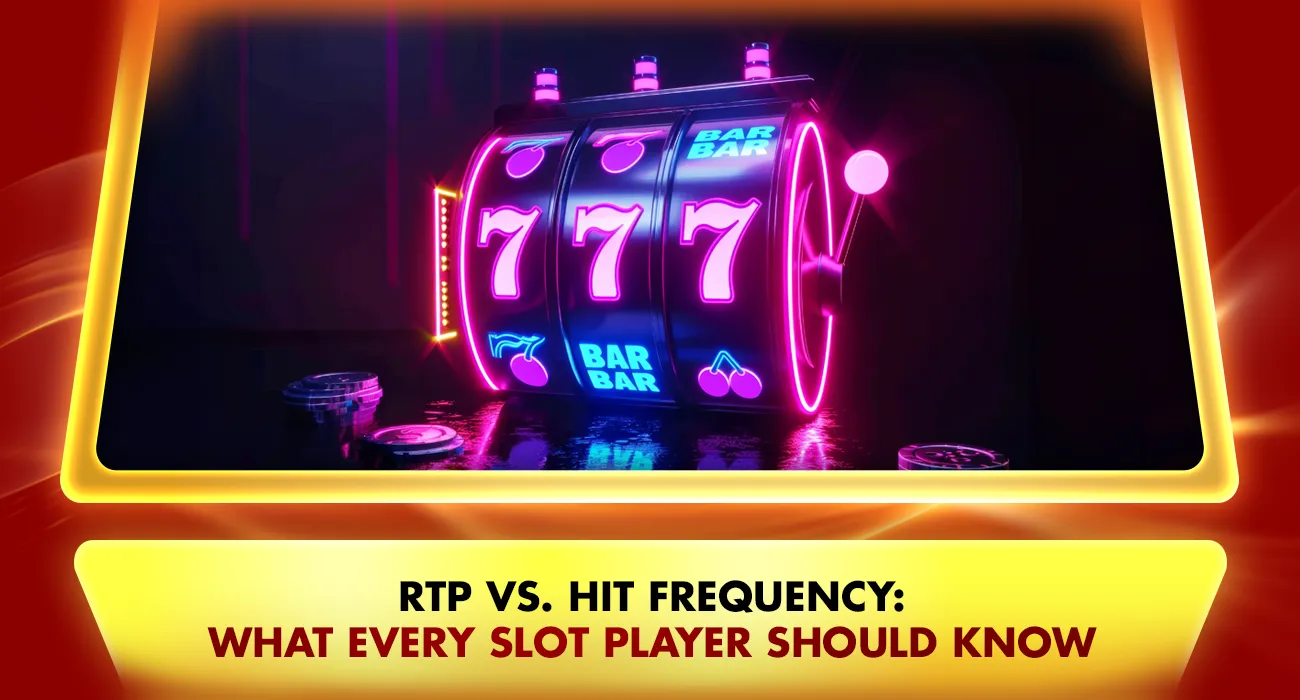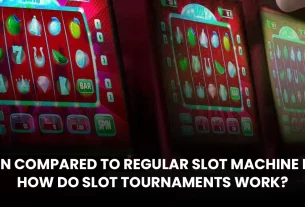When entering the world of slot games, many have come across these terms of Return to Player (RTP) and Hit Frequency. Indeed, knowledge of these two elements greatly helps players make informed decisions and enhance their gaming experience. At Khelraja, one of the best online casino platforms, education about these measures focuses on making the casino slots a more pleasurable and strategic offering for the player.
Return to Player (RTP): A Long-Term Viewpoint of Slot Games
RTP is a statistical measure that reflects the ratio of money wagered on a slot machine expected to be paid back over the years to players. Expressed in percentages, RTP is the measure that shows how profitable a game is to a player in the long term. For instance, assuming an RTP of 96% for a given slot game indicates that it will return, in the long run, US$96 for every US$100 wagered. Hence, individual sessions can deviate significantly from this figure, as it is a statistical average calculated over millions of spins.
Accordingly, players tend to believe RTPs exceeding 95% are good because they mean lower house edge. The house edge is defined as the valuation between the two parties, the casino and the punter. A small house edge implies better odds for the player. Hence, with the Garcia RTPs, reading the actual RTP will go a long way toward realizing what a slot gambling site like Khelraja can offer in potential returns.
Hit Frequency: Short-Term View
While RTP gives a long-term picture of what might happen regarding payout, Hit Frequency focuses on the short-term and indicates how often a slot machine can be expected to stand up with a `sit’ winning combination. Hit Frequency is given as a percentage, displaying the chance of winning on any combination of spins; for example, one with a Hit Frequency of 20% would mean that, on average, every fifth round would yield winnings.
It’s crucial to note that Hit Frequency doesn’t tell anything about the size of the prizes won. A game has a high frequency yet pays out paltry amounts, while another game can have a very low winning frequency and still give out huge jackpot prizes. The following interpretation is that the higher the Hit Frequency, the more frequent the wins; however, the amount is not necessarily larger. However, the lower the hit frequency, the less frequent the wins; however, those will most likely pay out bigger amounts.
RTP versus Hit Frequency: Fine Compliments
RTP and Hit Frequency give useful information for slot games. However, while RTP refers to a long-duration calculation of expected returns, Hit Frequencies measure the game action of win occurrences. So, they need to be weighed together for a complete insight.
The long-term returns of a game tell you about RTP. If a game has a high RTP, then RTP means it probably has good payout potential over time.
Hit Frequency informs the player of win occurrences as the game is played. A higher hit frequency means that wins occur with relative frequency, which increases the thrill factor and engagement of the game.
For example, a slot games may have high RTP and low Hit Frequency. A high RTP implies that, over time, the game returns a good portion of wagered money, while a low Hit Frequency means that wins occur infrequently but tend to be larger in value. Conversely, another game with a high hit frequency and low RTP might reward small wins with much frequency, helping to keep the player engaged geographically and with a much lower overall return.
Volatility: The Risk Factor
The concept of volatility or variance is closely related to RTP and Hit Frequency. Volatility is the measure of risks concerning a certain slot games, thus affecting both the frequency and magnitude of payouts. Games are usually categorized as:
Low Volatility: These games offer frequent wins with smaller price tags, thus appealing to players who prefer a steady stream of small payouts filtered out over long gaming sessions.
High Volatility: These games offer bigger win prizes but less often, appealing to the risk-taker who desires larger reward payouts.
Understanding more about a slot games volatility is a way to help slot players choose games that are relative to their risk-bearing capacity.
Khelraja Informed Choices
Khelraja provides a variety of slot games, all having different RTP, Hit Frequency, and volatility. We give detailed accounts of these, which help our players make informed decisions according to their preferences and strategies.
Some criteria to look at when choosing slot games include the following:
Check the RTP: Choose games with high RTP percentages for better long-term returns.
Check the Hit Frequency: Decide whether you prefer more frequent small wins or whether you can wait for the big payouts.
Understand Volatility: Make sure the risk level of the game aligns with your personal risk tolerance and bankroll management strategy.
This knowledge complements your gaming experience while managing expectations and forming strategies aligned with your goals.
In the dynamic world of casino slots, knowledge is power. Understanding the nuances of RTP, Hit Frequency, and volatility equips you with the tools to make informed decisions, tailor your gaming experience, and improve your outcomes. At Khelraja, we’re committed to providing a vast array of engaging slot games and the information and resources necessary for our players to navigate the gaming landscape confidently.
Remember, while these metrics offer valuable insights, slot games are ultimately games of chance. Always play responsibly, set limits, and prioritize enjoyment in your gaming endeavours.
Also read: The Top Football-Related Online Communities To know in 2025






